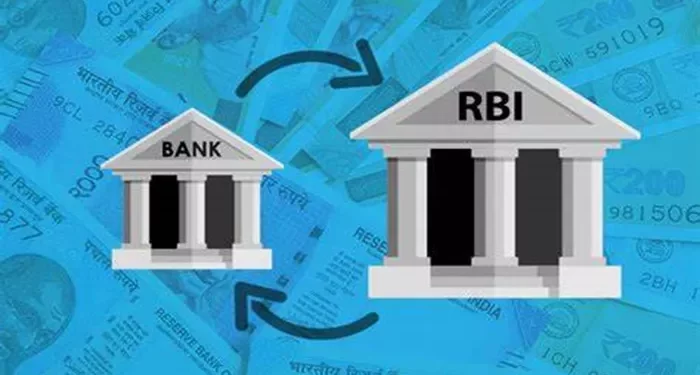This article sets out on a mission to demystify the often – complex and misunderstood concept of the RBI repo rate. It will embark on a detailed exploration, starting with a clear and comprehensive definition that cuts through the jargon and gets to the heart of what this rate truly represents. From there, it will delve into the mechanics of how it functions, explaining the intricate processes and interactions that underlie its operation. Finally, it will examine the far – reaching implications of the RBI repo rate, analyzing how changes in this rate can have a cascading effect on everything from interest rates on loans and deposits to inflation levels, economic growth, and overall market sentiment.
What is the Repo Rate?
The repo rate, short for repurchase rate, is the rate at which the Reserve Bank of India (RBI) lends money to commercial banks in the country. When commercial banks face a short – term shortage of funds, they can approach the RBI for financial assistance. The RBI provides these funds, and in return, charges an interest rate, which is the repo rate.
Technically, a repo rate transaction is a repurchase agreement. Commercial banks offer securities, such as government treasury bills, to the RBI. The RBI purchases these securities, providing the banks with the much – needed funds. At a later date, as per the agreement, the banks repurchase these securities from the RBI at a pre – determined price. This price is higher than the initial selling price, and the difference represents the interest paid by the banks to the RBI for borrowing the funds.
How Does the Repo Rate Work?
Role of the RBI
The RBI plays a central role in maintaining the stability of the financial system and controlling inflation. By adjusting the repo rate, the RBI can influence the amount of money that commercial banks borrow from it. If the RBI wants to inject more money into the economy, it will lower the repo rate. This makes borrowing cheaper for commercial banks. As a result, banks are more likely to borrow more money from the RBI.
On the other hand, if the RBI wants to reduce the amount of money in circulation, it will increase the repo rate. Higher repo rates mean that borrowing becomes more expensive for commercial banks. This discourages banks from borrowing large amounts of money from the RBI.
Impact on Commercial Banks
Commercial banks are directly affected by changes in the repo rate. When the repo rate is low, banks can borrow funds from the RBI at a lower cost. This encourages them to take more loans from the RBI. They can then use these funds to lend to their customers, such as individuals and businesses. Since the cost of borrowing for the banks is low, they can offer loans to their customers at relatively lower interest rates.
Conversely, when the repo rate is high, banks face a higher cost of borrowing from the RBI. To maintain their profit margins, banks will increase the interest rates they charge on loans to their customers. This makes borrowing more expensive for individuals and businesses, which can lead to a slowdown in borrowing and investment.
Impact of the Repo Rate on the Economy
Controlling Inflation
One of the primary roles of the repo rate is to control inflation. Inflation is the rate at which the general level of prices for goods and services is rising. When inflation is too high, the value of money decreases, and people can buy fewer goods and services with the same amount of money.
If the RBI observes that inflation is rising above its target level, it will increase the repo rate. Higher repo rates make borrowing more expensive for commercial banks. As a result, banks increase the interest rates on loans to their customers. This makes borrowing for businesses and individuals costlier. With higher borrowing costs, businesses may cut back on expansion plans, and individuals may delay big – ticket purchases such as houses or cars. This decrease in borrowing and spending leads to a slowdown in economic activity. With less demand for goods and services, the upward pressure on prices eases, and inflation can be brought under control.
Boosting Economic Growth
In times when the economy is sluggish and needs a boost, the RBI can lower the repo rate. A lower repo rate makes borrowing cheaper for commercial banks. Banks, in turn, can offer loans to businesses and individuals at lower interest rates. This encourages businesses to borrow money to expand their operations, invest in new machinery, or start new projects. It also makes it more affordable for individuals to take out loans for things like buying a home or a car.
Increased borrowing and spending by businesses and individuals lead to an increase in economic activity. More jobs are created as businesses expand, and consumer spending drives up demand for goods and services. This, in turn, stimulates production, and the overall economy begins to grow.
Impact on the Stock Market
The repo rate also has an impact on the stock market. When the repo rate is lowered, borrowing becomes cheaper. This can lead to an increase in investment in the stock market. Companies can borrow money at lower rates to fund their growth, which can lead to increased profitability and, in turn, higher stock prices. Additionally, lower interest rates on fixed – income investments such as bank deposits make stocks more attractive as an investment option. As a result, more money may flow into the stock market, driving up stock prices.
Conversely, when the repo rate is increased, borrowing becomes more expensive. This can lead to a slowdown in business expansion plans, which may result in lower corporate earnings. Higher interest rates also make fixed – income investments more appealing compared to stocks. As a result, investors may pull their money out of the stock market and invest in fixed – income securities, causing stock prices to decline.
Impact on the Real Estate Market
The real estate market is highly sensitive to changes in the repo rate. A lower repo rate means that banks can offer home loans at lower interest rates. This makes buying a home more affordable for individuals. As a result, the demand for homes increases. With higher demand, real estate developers are more likely to start new projects, which can boost the construction industry and related sectors such as cement, steel, and furniture.
On the other hand, when the repo rate is increased, home loan interest rates also rise. This makes buying a home more expensive, and the demand for homes may decline. Real estate developers may delay or cancel new projects, and the growth of the real estate market may slow down.
Factors Influencing the Repo Rate
Inflation Data
Inflation is one of the most significant factors that influence the RBI’s decision regarding the repo rate. The RBI has a target inflation rate. If the actual inflation rate is above this target, the RBI is likely to increase the repo rate to control inflation. Conversely, if inflation is within the target range or below it, the RBI may consider lowering the repo rate to stimulate economic growth.
GDP Growth
The growth rate of the Gross Domestic Product (GDP) is another crucial factor. If the GDP growth rate is slow, indicating a sluggish economy, the RBI may lower the repo rate to encourage borrowing and spending, thereby boosting economic growth. However, if the economy is growing too fast, which may lead to inflationary pressures, the RBI may increase the repo rate.
Global Economic Conditions
The global economic situation also has an impact on the repo rate. For example, if there is a global economic slowdown, it can affect India’s exports. To counter the negative impact on the economy, the RBI may lower the repo rate to stimulate domestic demand. Additionally, if there are significant changes in global interest rates, the RBI may adjust the repo rate to maintain the competitiveness of the Indian economy and to manage capital flows.
Fiscal Policy
The government’s fiscal policy, which includes decisions regarding government spending and taxation, can also influence the repo rate. If the government is implementing expansionary fiscal policies, such as increasing spending or cutting taxes, it may lead to increased economic activity. In such cases, the RBI may need to adjust the repo rate to ensure that inflation remains under control.
Conclusion
The RBI repo rate is a powerful tool that plays a multifaceted role in the Indian economy. It serves as a key instrument for controlling inflation, promoting economic growth, and influencing various sectors such as banking, stock markets, and real estate. By understanding the repo rate and how it works, individuals and businesses can make more informed decisions. Whether it’s an investor deciding where to put their money, a business planning its expansion, or a home – buyer considering taking a loan, the repo rate has a direct or indirect impact on these decisions. The RBI carefully monitors various economic factors and adjusts the repo rate as needed to maintain a balance between economic growth and price stability. As the economic landscape of India continues to evolve, the repo rate will remain a crucial element in shaping the country’s financial future.
Related topics

























